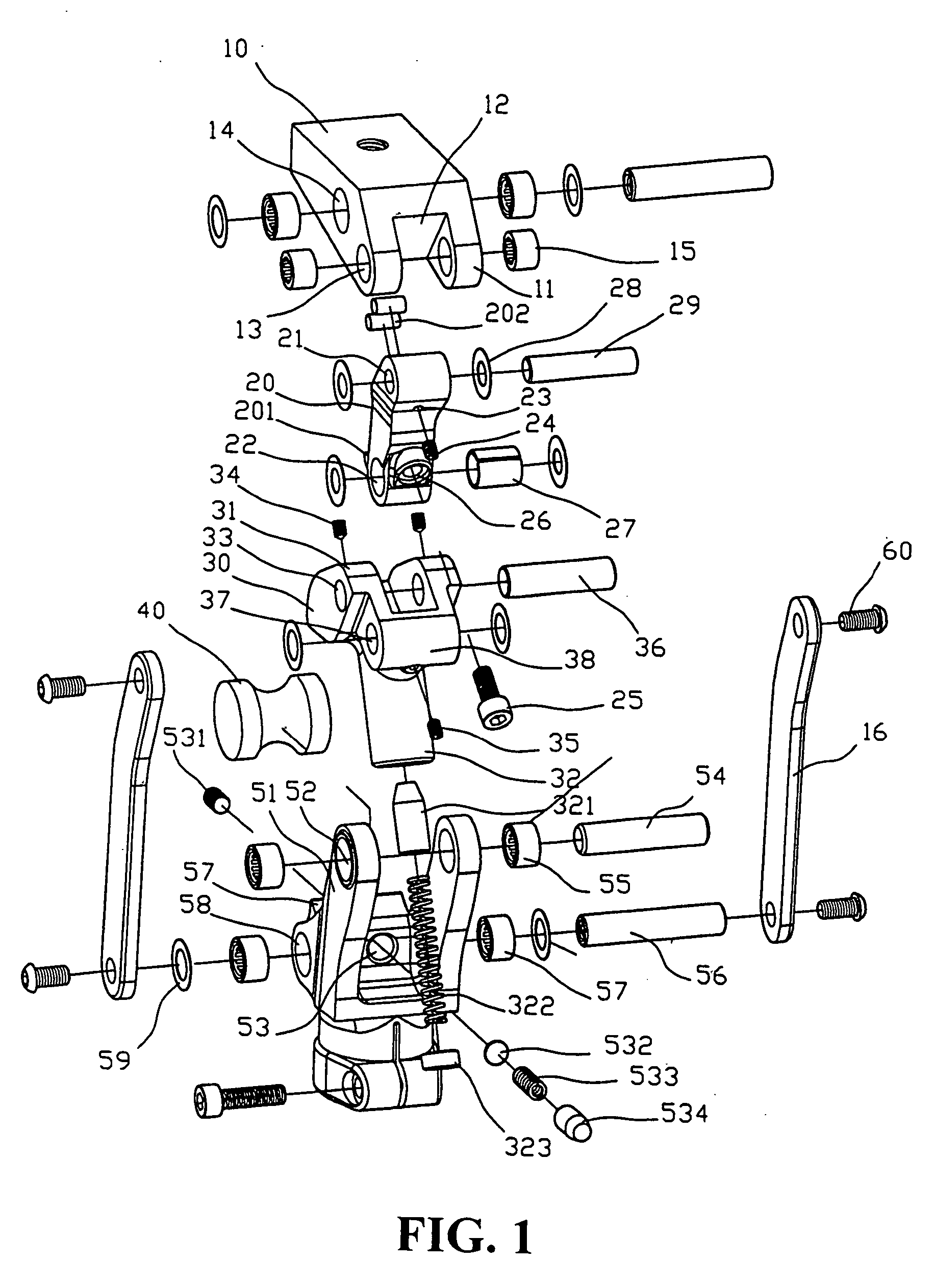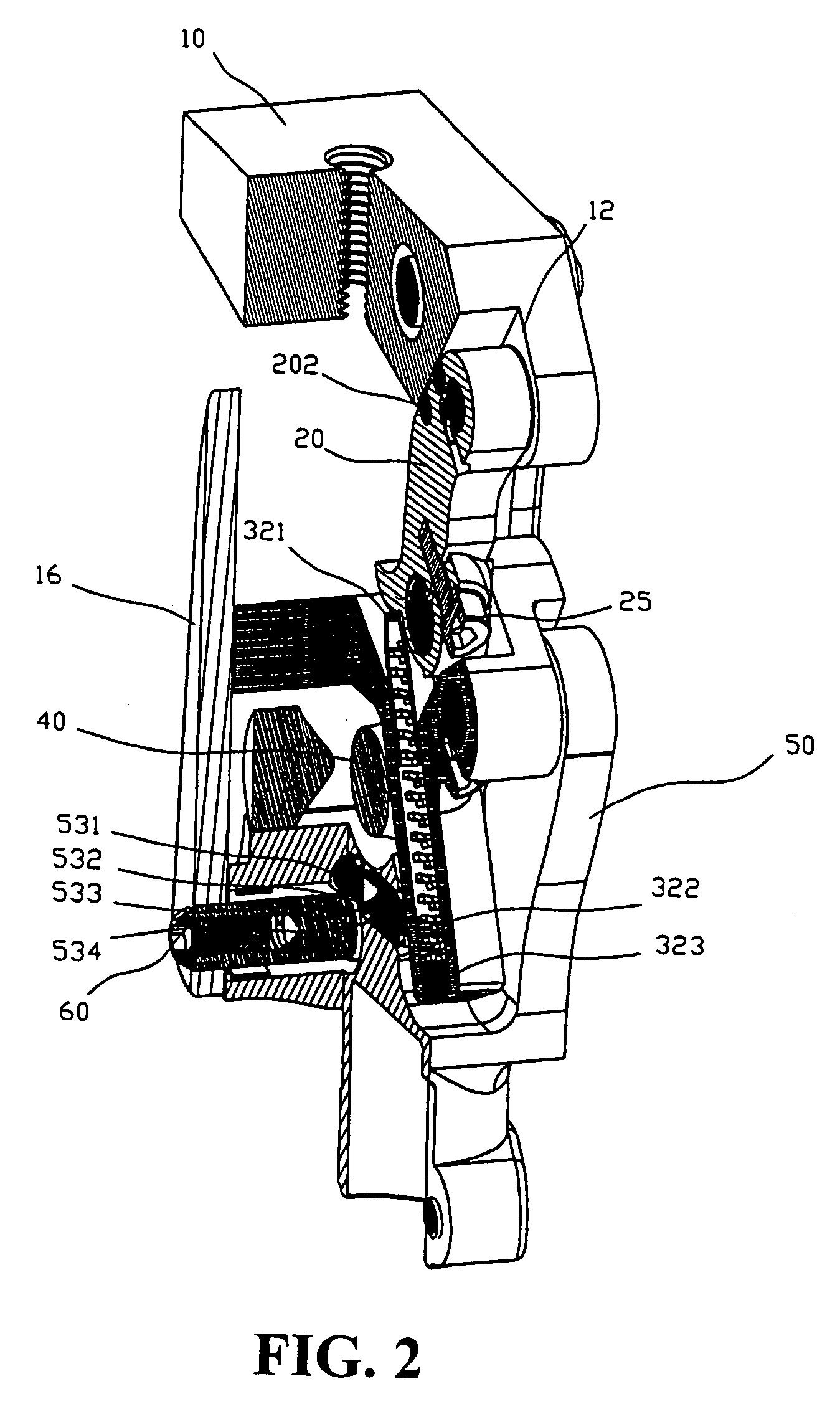Prosthetic knee joint structure
a knee joint and prosthetic technology, applied in the field of prosthetic legs, can solve the problems of inability to keep the bending of the prosthetic leg within a range of the elements of the conventional prosthetic knee joint, and the most important and complicated part of the prosthetic leg is the knee join
- Summary
- Abstract
- Description
- Claims
- Application Information
AI Technical Summary
Benefits of technology
Problems solved by technology
Method used
Image
Examples
Embodiment Construction
[0017] The following descriptions are of exemplary embodiments only, and are not intended to limit the scope, applicability or configuration of the invention in any way. Rather, the following description provides a convenient illustration for implementing exemplary embodiments of the invention. Various changes to the described embodiments may be made in the function and arrangement of the elements described without departing from the scope of the invention as set forth in the appended claims.
[0018] As illustrated in FIG. 1, an embodiment of the prosthetic knee joint according to the present invention contains an upper member 10 for connecting to a prosthetic thigh, a lower member 50 for connecting to prosthetic shin and foot, a lining device for connecting the upper and lower members 10 and 50 which mainly includes a joining element 20 and connecting rods 16, a cushion element 40, and a resilient device for shock absorption. The resilient device in turn mainly includes a supporting...
PUM
 Login to View More
Login to View More Abstract
Description
Claims
Application Information
 Login to View More
Login to View More - R&D
- Intellectual Property
- Life Sciences
- Materials
- Tech Scout
- Unparalleled Data Quality
- Higher Quality Content
- 60% Fewer Hallucinations
Browse by: Latest US Patents, China's latest patents, Technical Efficacy Thesaurus, Application Domain, Technology Topic, Popular Technical Reports.
© 2025 PatSnap. All rights reserved.Legal|Privacy policy|Modern Slavery Act Transparency Statement|Sitemap|About US| Contact US: help@patsnap.com



